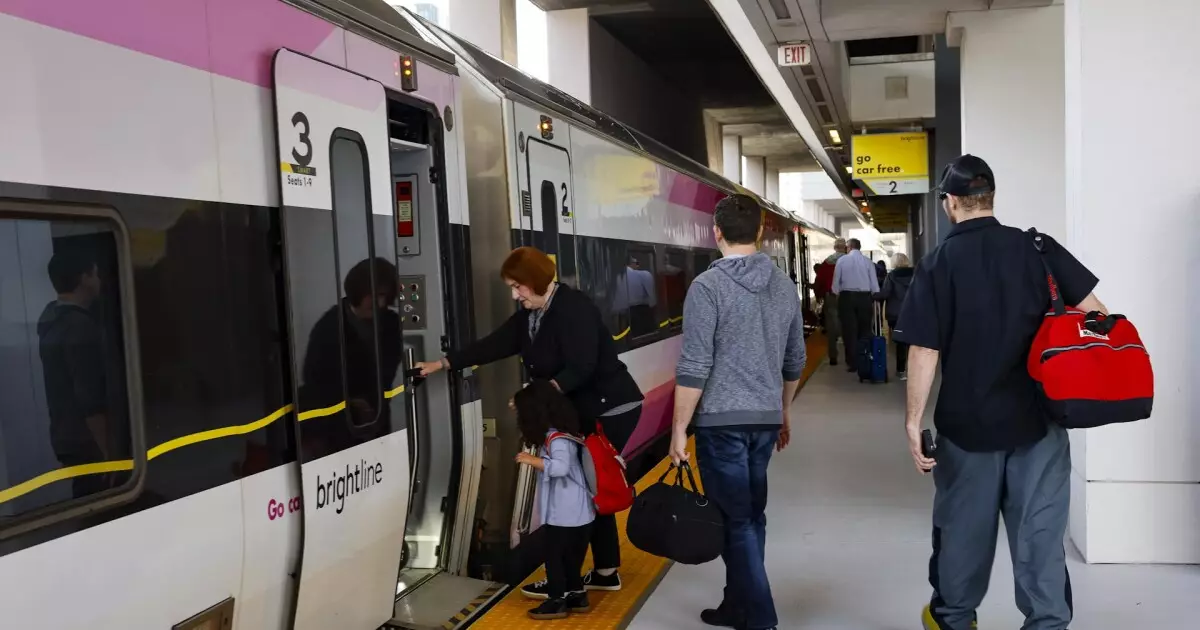The recent financial maneuvers surrounding Brightline Florida have set a new standard in the realm of infrastructure financing in the United States. Initiatives like Brightline, which are pioneering in their approach to passenger rail travel, have garnered attention not only for their operational efficiency but also for their innovative financing strategies. Since its inception in 2017, Brightline has developed into a model for how public-private partnerships can thrive, resulting in significant advancements in intercity transportation.
Understanding the Scope of the Transaction
Brightline’s $3.2 billion financing, which stands as the largest private-activity bond issuance and the first investment-grade bond deal in the United States for intercity rail, encapsulates a complex web of financial structures. The enormity of this deal, encompassing $4.5 billion in restructured debt, was historically significant for several reasons. First, it highlighted the collaborative efforts of various stakeholders, including financial advisors, underwriters, and legal counsel, who played crucial roles in orchestrating such a multifaceted transaction. The synergistic involvement depicted the necessity of various specialties in ensuring a successful financing model, further laying the groundwork for future infrastructure projects.
One of the remarkable aspects of the Brightline financing narrative was the strategic structuring of various debts to appeal to a diverse investor base. As Zachary Solomon from Morgan Stanley noted, the team spent years refining their approach based on insights about what investors prioritize. By designing a capital structure that catered to the distinct interests of different investor categories, Brightline bolstered its market position and enhanced its attractiveness. This was not merely about raising funds; it was about crafting a financial story that resonated with the nuances of the investor market, which had been meticulously cultivated over the last seven years.
The coordination required to synchronize multiple aspects of such a comprehensive deal was akin to preparing a complex meal with many ingredients—the proverbial “Thanksgiving dinner of transactions,” as described by Brightline’s Alexandra Levin. The nuances of consolidating tax-exempt and taxable debt while ensuring that they all closed simultaneously were daunting. This analogy aptly captures the intricacies and substantial efforts involved in the process. Each component of the financing needed to align perfectly, presenting a logistical challenge that required an unwavering commitment from all involved parties.
The lead-up to the pricing phase saw intense preparations, which resulted in strong market demand upon the deal’s launch. With nearly $6 billion in orders for the $2.2 billion tax-exempt debt that featured a wrap from Assured Guaranty, it was evident that investor appetite for established, innovative infrastructure projects was robust. This deal was not just about finances; it encapsulated the increasing recognition of Brightline as a formidable entity in the public transportation landscape. The diverse participation, from high-grade bond funds to retail investors, illustrated a shift in perception and trust in privately funded rail systems.
Leveraging Transparency in Building Relationships
Another key takeaway from this financing saga was Brightline’s commitment to transparency, which played an instrumental role in building investor trust. Monthly updates and open dialogues established a continuous flow of information that fostered a strong relationship between Brightline and its investors. By treating stakeholders with respect and actively engaging with them, Brightline was not only able to secure necessary capital but could also cultivate a positive reputation that would serve it well in future endeavors.
The Brightline deal serves as a blueprint for future infrastructure projects aspiring to achieve similar success. As Solomon pointed out, initial skepticism about the feasibility of such a project morphed into a case study on effective infrastructure financing. This achievement is particularly significant as the U.S. grapples with the pressing need for modernization of its transport systems to meet 21st-century demands. The successful combination of innovative financing and operational strategy contributes to the ongoing dialogue about intercity rail’s potential, offering insights for stakeholders across various transportation and infrastructure sectors.
In summation, Brightline’s ambitious financing initiatives underscore a transformative moment in the American rail industry, propelled by innovative structures and strategic investor relationships. As more regions contemplate similar advancements in passenger rail travel, the methodologies employed by Brightline can offer invaluable lessons. The path to modernization lies not only in the vision of high-speed trains, but also in the multifaceted financial frameworks that make such visions a reality. The Brightline saga is a testament to what is possible when creativity meets careful planning within the dynamic landscape of public-private partnerships.


Leave a Reply